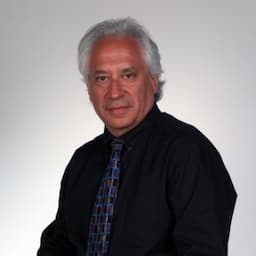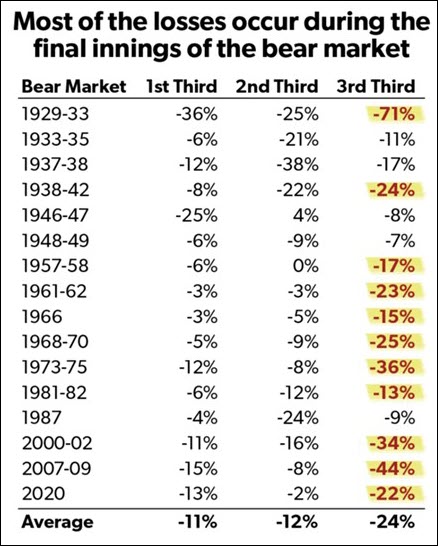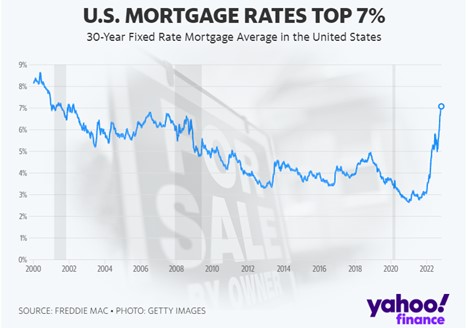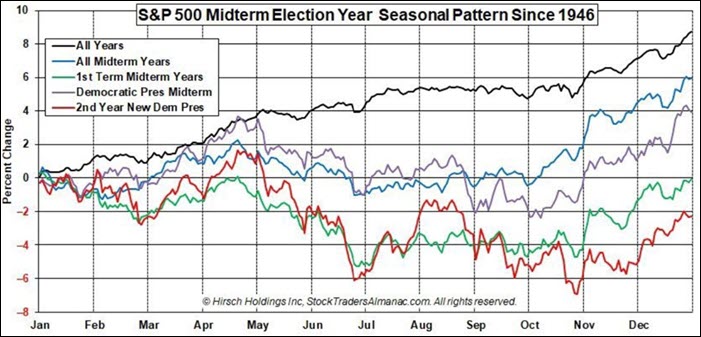When it comes to the stock market, October is often referred to as the “cruelest month of the year”. For 2022 not so much. In fact, it was the second-best performing month of the year so far. But given very few positive months that may not be saying much.
In late September, an overwhelming number of investors had a bleak view near term future.
This was illustrated in recent Market Outlooks where we reported about the tremendous amount of put buying, and defensive insurance placed on portfolios by sophisticated investors. So far, they have been wrong.
In just 30 days (since September 30-month end) the major market segments have had a huge rally. For example, and in order of performance:
- DIA, the Dow Industrials, gained +14.4% (4,128 points!) and is now only down -9.6% for the year.
- IWM, the Russell 2000, rallied +11.1% and is down -17.7% YTD.
- SPY, the S&P 500, gained +8.9% leaving it down 18.1% for the year.
- QQQ, the NASDAQ 100, rose +5.2%, but it’s still down 29.3% YTD.
Looking closer at some of the big winners this past month, it might surprise you that IT WAS NOT the growthier stocks, but instead those that are in the value camp that performed well. Here is a list of some of the biggest winners during the month of October:

Interesting to note that other than a few of the energy names listed above, most of these stocks are still down for the year and several are still down quite a bit. More importantly, value stocks have been fueling a big part of this rally. As noted above, besides the mega cap value stocks in the DIA, it has also been about small cap stocks (IWM).
As a comparison, for the month of October, we looked at the proxies for Value and Growth that we like to monitor, VTV (Value) and VUG (Growth). VTV was up 12.2% and VUG was only up 5.2%. Value may be on a tear and to demonstrate that value can and does come back in favor in a big way (especially after a bear market), we offer the following graph to highlight the last period (2000 to 2006) that Value outperformed Growth. Coincidentally, during this period small cap stocks (Russell 2000 index) outperformed large cap (S&P 500). This lasted for more than a half of a decade. And, that was during and after a significant technology bear market, similar to what we are experiencing in 2022.

Wipe Out!
Even though it was a good month, it was not so for several of the largest technology titans that take up huge weightings in the QQQ (Nasdaq 100), the S&P 500 and even the Dow Jones.
Other than Apple (NASDAQ:AAPL), that was the shining star beating earnings expectations when it reported Thursday, the other 6 technology behemoths, missed earnings expectations or came close but offered negative earnings guidance for the foreseeable future.
Amazon’s Founder and Chairman, Jeff Bezos, commented further this week by offering sage advice saying “batten down the hatches”, as he believes, as do 90% of corporate CEOs do as well, that we are heading for a severe recession. More on that shortly.
The problem of course with the largest technology companies is inherently in arithmetic. With valuations in most cases exceeding $1 trillion (Tesla (NASDAQ:TSLA) may be the exception), in order to sustain growth rates that are favorable for Wall Street, these companies have to constantly innovate and grow revenue (and earnings) at alarming rates. As labor costs rise (including benefits which may be rising faster than wage costs), these technology titans begin to see contracting margins. Couple this with higher fixed operating costs (energy, rent and taxes) and earnings are impacted.
Another significant problem for most of these companies (shown below) is that over 50% of their business is overseas. With a strong dollar that has been rising in value (against foreign currencies) this has been a strong headwind on currency conversion and has cost these multinational companies dearly.
Many of these tech giants have started taking important steps to cut their workforce in anticipation of further economic erosion in the coming months. Microsoft (NASDAQ:MSFT), for example recently announced layoffs across multiple divisions.
Check out the fall in their stock values in these 7 companies over the past 1 year through Friday morning: (Note that the collective loss in these companies on Thursday alone was over $500 billion).
Strong Headwinds Remain:
There are still strong market headwinds that exist. If they did not, our cautionary mantra may all but disappear. Unfortunately, it is not time to take our guard off. Bear market surprises in geopolitical risks, the economy, rising interest rates and some surprises could send shock waves into the markets. Moreover, bear markets typically don’t end softly.
Why is this so? Right now we have had powerful negative bond sell-off. The most powerful rising rate environment and negative bond returns. This has catapulted us into inverted yield curves which portends a future recession. Therefore, the worst may still be in front of us. The third inning can be the toughest. Please review the table below. This might very well happen. (courtesy of our colleague a talented RIA, Dan Korth in CA):
This week we had several vital economic reports released. Most suggesting that additional caution is advised. These included:
Housing:
- New home sales: -10.9%7
- Pending home sales: -10.2%
- # of homes for sale in September: 1.25 million down -2.3%
- New home listings: down -17%
- Number of homes in September with a price reduction: 22% (according to Redfin)
- And one of the most problematic (people can afford only about 60% of the house they were considering before the fall of 2022).
- Gross Domestic Product (GDP) +2.6% (government spending made up some of the increase)
- Personal Consumption Expenditures (PCE) +6.2%
Given the PCE still running hot it is likely that the Federal Reserve will raise rates another 75 basis points when they meet this coming Wednesday (November 2nd) at their monthly meeting.
Rising bond rates backed off this week, especially the 10-year US Treasury which had risen during most of September and early October to new fresh highs not seen since 2002. This helped the stock rally and encouraged some pundits to believe that maybe the Fed would pivot and slow their continued rise of interest rates.
Not likely.
The Fed’s goal is price stability. As evidenced above, home sales, construction and new building are being hit hard by the Fed’s actions. Yet the Fed has made it quite clear that they feel it is necessary to cause these hardships to cool down the economy at this time. Look for more pain in interest rates in the near future. Undoubtedly this will create a deeper inverted yield curve and more prognostications for a imminent recession.
They will do what it takes to fight this elevated inflation. While most analysts agree that they were late, the Fed is likely to continue taking aggressive action well into 2023, if need be. These actions will provide additional headwinds to the market and keep earnings dampened as well as the possible multiples that investors are willing to pay for stocks and a $1 of earnings.
Most forecasters (including Jamie Dimon and Jeff Bezos) are predicting an ugly economic future. I suggest that when everyone starts thinking the same thing, that thing may not materialize. Everyone has a forecast.
There Are Positives Themes To Watch Out For, Too…
While we paint a negative picture above, there are plenty of positives that could fuel the market higher, at least in the short-term.
The Rally Looks Like a Double Bottom (so far):
It has been a good month (October). We suggest our subscribers and investors NOT grow complacent as this may be another bear market rally. What we just went through certainly looked like a double bottom (see chart below).
Please notice a few things. This chart looks like a W. You will notice that in July-August we rose to 427.94 on the SPY before turning down and heading to new lows. But conspicuously you may notice that volume did not spike when we hit those new lows.
Vicious bear market rallies are made up of a combination of money sitting on the sidelines waiting for an opportunity coupled with short sellers and put owners needing to cover (buy back) to preserve capital. We have seen plenty of this during October, 2022.
Be careful, it’s often difficult to distinguish bear market rallies from bull market bottoms.
Seasonality And Midterm Election Cycles
Now that we are through the “scary” October, we enter a positive period. Especially at or around the midterm elections and with a Democratic President. Please review the seasonality/cycle chart below.
The green and red lines are more applicable to now and both lines point to an upcoming positive bias in the market for the rest of the year.
Some of the other factors which could fuel a continued up move in the market include:
- Significant cash sitting on the sidelines that could be deployed
- Negative investor sentiment which often serves as a contrarian/positive indicator
- Earnings are coming in above consensus expectations. Many of these companies are value stocks in the energy, basic materials, financials, and transportation sectors.
- According to FactSet 52% of S&P 500 companies have reported earnings with 71% beating expectations and 68% beating their revenue estimates. Granted earning expectations were adjusted down, but I can’t help thinking this rally is tied to better actual earnings being released.
- There are several technical conditions covered in this week’s BigView bullets that support the idea of a rally from current levels.
Here Are Some Additional Observations:
Risk On
- 3 of the 4 key US indices, excluding QQQ, improved their market phase, with the Dow (DIA) leading by reclaiming its 50 and 200-day moving averages and now about 12.5% from the all-time high. (+)
- All four key US indices have now reclaimed their 200-week moving averages. (+)
- Volume Analysis of the major indices continues to show strength, with more accumulation days than distribution days with the Russell 2000 (IWM) leading with zero distribution days over the past two weeks. (+)
- Every sector was positive on the week, with Retail (XRT) and Homebuilders (XHB) the strongest. (+)
- Although US Equities rallied on the week, there was a market breakdown in several major countries, including China (FXI), Egypt (EGPT), and Brazil (EWZ), all down 7%-10%. (+)
- The McClellan Oscillator has reached overbought levels for the SPY, but this may be a bullish scenario given the velocity of the move after coming off of major low readings. (+)
- Internals for the Nasdaq Composite aren't at the same bullish levels as they are for SPY, but are still displaying relatively bullish levels. (+)
- The 52-week New High / New Low ratios for both the S&P 500 and the Nasdaq Composite have flipped to Risk-On. (+)
- Risk Gauges remain fully Risk-On. (+)
- The number of stocks above key moving averages is showing risk-on, but may be running a bit rich on a short-term basis (the 10-day moving average). (+)
- Value stocks (VTV) exploded this week and are now significantly outperforming Growth stocks (VUG), with the ratio between the two now hitting an all-time high. (+)
Emerging markets with a large exposure to Chinese stocks, continue to underperform by a wide margin to US equities. (+) - Soft commodities and gold are under pressure. Precious metals and copper all were negative. (+)
- Gold (GLD (NYSE:GLD)) remains under pressure and working to hold its recent lows and is currently under the 10-day moving average, and could potentially go lower with a double bottom in October. (+)
- The US dollar backed off current strength, FXE (Invesco Currency Shares Euro Trust ETF) broke above its 50-day moving average for the first time since the beginning of the year. (+)
Neutral
- The Volatility Ratio marginally improved this week and bounced off bullish levels. (=)
- Short-term rates look like they've based out, which was the likely catalyst for the bond rally. (=)
- Biotechnology (IBB), followed closely by small capitalization stocks, the Russell 2000 (IWM), have continued to lead the Modern Family higher on steady increased trading volume. Transportation (IYT) and Semiconductors (SMH) remain in bear phases. (=)
- Inflationary pressures continue with energy stocks, led by exploration and production, providing positive returns over five days, three months, and six months. (=)
Risk Off
- The Yield Curve remains inverted. (-)





